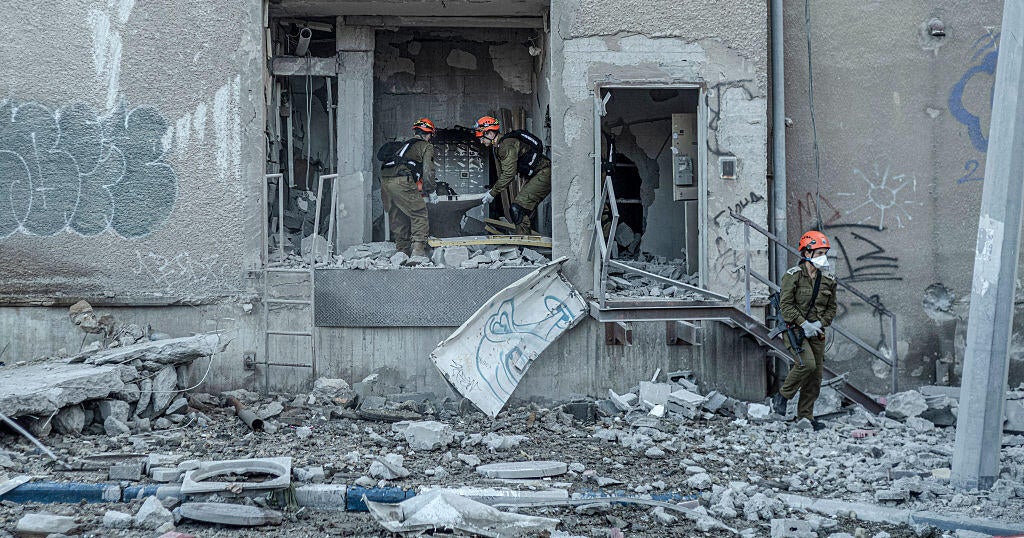Recent tensions between Israel and Iran escalated dramatically when an Iranian missile strike on Friday injured 23 people in northern Israel, according to emergency services. This violent incident comes amid a broader conflict that has claimed numerous lives on both sides, including civilians. As diplomatic negotiations continue in Geneva, military actions intensify, highlighting the fragile and volatile situation in the region.
| Article Subheadings |
|---|
| 1) Details of the Missile Strike in Israel |
| 2) Iran’s Response and Diplomatic Talks |
| 3) The Broader Context of the Conflict |
| 4) Impact on Civilians in Gaza and Israel |
| 5) International Reactions and Future Implications |
Details of the Missile Strike in Israel
On Friday, an Iranian missile strike targeted northern Israel, wounding 23 individuals, as reported by Magen David Adom, the Israeli emergency medical service. Among those injured were three people in serious condition, including a 16-year-old boy suffering from shrapnel wounds to his upper body. Additionally, two men, ages 40 and 54, sustained leg wounds from the incident, while a woman tragically died of a heart attack while seeking shelter during the attack. The missile strikes reportedly involved approximately 20 missiles aimed at Israel, indicating a significant and coordinated military effort by Iran.
Iran’s Response and Diplomatic Talks
In response to the escalating violence, Iranian officials have expressed their reluctance to engage in talks with the United States as long as Israel continues its military actions against Iran. Iranian Foreign Minister Abbas Araghchi stated ahead of diplomatic meetings in Geneva, “We have nothing to discuss” with the U.S. Nevertheless, he indicated an openness to dialogue with other nations, albeit not in the form of negotiations. Following hours of discussions, Britain’s foreign secretary, David Lammy, emphasized that Europe remains committed to ongoing discussions with Iran while firmly asserting that nuclear weapons should not be in Iran’s arsenal. The diplomatic backdrop adds complexity to an already fraught military situation.
The Broader Context of the Conflict
The recently intensifying conflict between Israel and Iran has already resulted in significant casualties. According to a Washington-based group, at least 657 people have died due to the ongoing violence, including 263 civilians in Iran alone. Reports from Israeli officials indicate that at least 24 individuals have perished in Israel amidst the chaotic backdrop. This marked increase in violence follows a week of military engagements, with various attacks and retaliations from both sides, indicating a deepening crisis that is drawing in regional and potentially global implications.
Impact on Civilians in Gaza and Israel
As military operations intensify, the humanitarian situation in Gaza has reached a dire state, with reports indicating that no humanitarian aid has entered the territory for 48 hours. The Hamas-run Ministry of Health in Gaza reports a staggering death toll of at least 42 individuals in the latest bombardments, exacerbating the already dire condition of civilians in the region. Many of those killed were reportedly seeking humanitarian assistance, with the UN warning that the entire population of Gaza is at risk of starvation amid increasingly severe conditions. These incidents underscore the heavy toll of the ongoing conflict on innocent lives.
International Reactions and Future Implications
The international community has watched the escalating conflict with growing concern. Various world leaders have called for restraint, emphasizing the need for a peaceful resolution to the conflict. The ongoing military engagements and the humanitarian crisis in Gaza have prompted discussions about potential interventions and the role of international organizations in mediating the conflict. As both sides continue their respective military campaigns, the prospects for peace remain obscure, raising fears of a prolonged and deadly confrontation in the Middle East.
| No. | Key Points |
|---|---|
| 1 | An Iranian missile strike on Israel resulted in 23 injuries, including a serious case involving a teenager. |
| 2 | Iranian officials reject dialogue with the U.S. amid ongoing Israeli military actions. |
| 3 | The conflict has left hundreds dead, most of whom are civilians in Iran. |
| 4 | Humanitarian conditions in Gaza are deteriorating, exacerbated by military operations. |
| 5 | International leaders urge for a peaceful resolution amid rising violence in the region. |
Summary
The recent missile strike by Iran on northern Israel is a stark reminder of the escalating tensions in the Middle East. The repercussions of this conflict extend far beyond military action, impacting thousands of civilians on both sides and raising pressing humanitarian concerns. As diplomatic discussions continue alongside military engagements, the urgency for a peaceful resolution remains paramount, underscoring the need for international attention and intervention.
Frequently Asked Questions
Question: What prompted the Iranian missile strike on Israel?
The missile strike was part of a broader escalation in military engagements between Israel and Iran, following ongoing hostilities and retaliations.
Question: How many casualties have resulted from the conflict?
The conflict has resulted in at least 657 deaths, primarily among civilians in Iran, alongside casualties in Israel.
Question: What humanitarian issues are arising from the current situation?
Many civilians in Gaza face dire humanitarian conditions, with reports indicating that the population is at risk of starvation and lacks essential aid.


